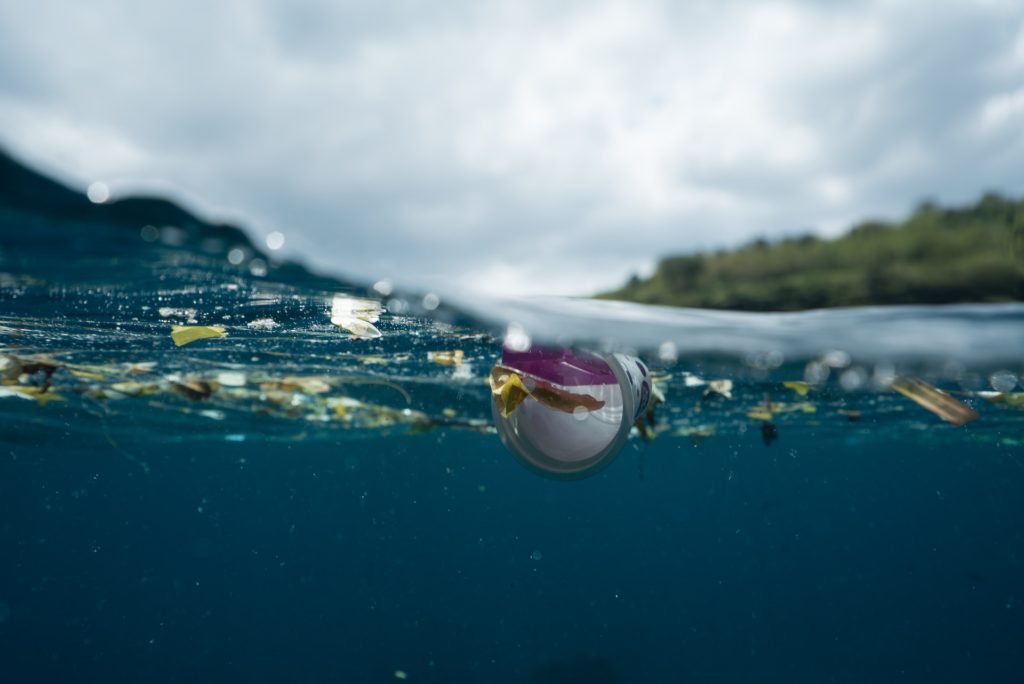
Plastic is everywhere. No joke. It’s literally everywhere. I don’t just mean floating in the ocean, stuck in a turtle’s nostril, or on the tail of a seahorse. Scientists are discovering plastic in the most remote glaciers, human placentas, and all kinds of other things. I learned about microplastics as a biology student. I was concerned about them then, and I’m concerned about them now. I really care about our planet. But I also care that I will probably never be able to have tuna salad or a piece of fish that doesn’t have multiple pieces of plastic in it. You should too.
Microplastics, what are they? There’s a lot to cover on this topic, but my goal is to give you an introduction…to what they are, how they’re created, where microplastics can be found, and why it’s a big deal. If you’re interested in this kind of content, make sure to sign up for my free newsletter. You’ll get new content delivered to you weekly and exclusive updates on what’s around the corner.
Table of Contents
What are microplastics?
The definition of microplastic is simple. Microplastics are tiny pieces of plastic.
How big are microplastics?
NOAA, the National Ocean and Atmospheric Administration, says a microplastic is a plastic piece that measures less than 5mm. That’s about the height of 10 pieces of paper or the width of a pencil eraser, for reference. 5mm is obviously visible but they can also be so small that you need a microscope to see them.
Where do microplastics come from?
Microplastics come from bigger pieces of plastic. You could think of it like a reverse snowball. Instead of slowly accumulating a bunch of snow, the snowball leaves a bunch of teeny tiny pieces of snow in its wake. That’s how plastic works. It breaks down into smaller and smaller pieces until it’s basically invisible, whether it’s outdoors or in your home.
Microplastics can come from any number of things. It could be as simple as a plastic bottle straw, or as unexpected as a cigarette filter. Plastic can be found everywhere in our products, so naturally you can find it everywhere in our environment too (where a lot of our trash ends up). So what are some other places microplastics can be found? You might want to take a seat for these.
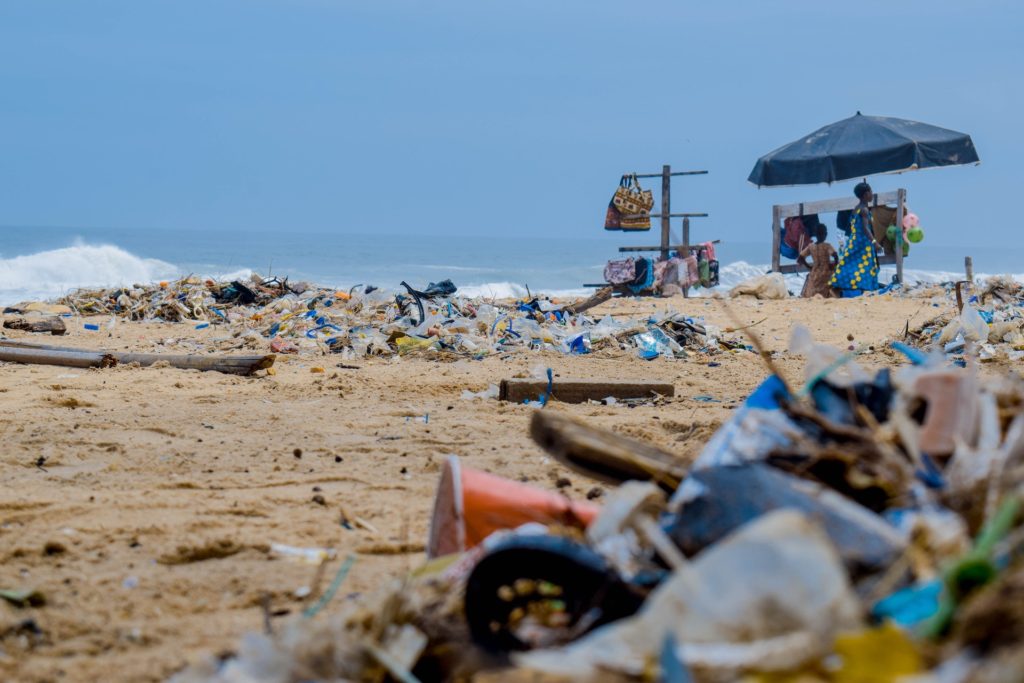
Where are microplastics found?
Here’s a short list of a few surprising places you can find microplastics.
- Human Babies
- Us. You and me.
- Food (take your pick)
- Human Placentas
- Ocean Water
- Fish
- Drinking Water (Bottled Water)
- Mouse Brains
If that’s shocking to you, I’m right there with you. They can end up basically anywhere.
Microplastics in Babies
Microplastics have been found in baby poop. This source says there are more of them in baby poop than adult poop. If you didn’t know you had plastic in your poop, then surprise!

Microplastics in Placentas
This article links to a study from Italy. You might not have access to the article, but it was published by Environmental International. The study found microplastics in human placenta, which means there are microplastics in some people’s wombs! What’s even crazier is that some of the compounds were identified as compounds from paint, adhesives, and cosmetics. Politics aside, this means that some babies are exposed to plastic pollution before they’re even born. That’s not a future I want for anyone.
Microplastics in Food
Microplastics can also be found in all sorts of food, from fresh fish to beef burgers. One study talks about how they can be found in many fish no matter where the fish is coming from. It could be a deepwater fish or a fish that likes shallow water, the microplastics do not discriminate.
Our land dwelling animals aren’t safe either. Another study found that microplastics are present in the blood of livestock, which means it’s in their cells. The plastic is in your meat before the meat is even really meat. The plastic wrap in grocery stores only add to that level of microplastics.

Mouse Brains
Many of my readers are vegan and cruelty free, so this part may be difficult. I apologize, but as of right now mice are regularly used in laboratory experiments.
Scientists from one study found that microplastics were making their way across the blood-brain barrier in mice. If you’re not familiar with brain terminology, the blood-brain barrier is a super strict border that anything has to cross in order to enter the brain’s territory. Drug companies spend billions trying to understand it and get their drugs through it. Crossing the blood brain barrier is no easy task, but some microplastics get through without even breaking a sweat.
The researchers thought that was crazy and went to see what it does to brain cells. Not just any cells, but microglial cells. Those cells help our brain stay in working order. The scientists found that microplastics can cause those brain cells to act like they’re infiltrated. Usually an invasion of our cells would happen because a bacteria or virus managed to cross the blood-brain barrier. So as a defense mechanism, the cell sometimes kills itself in an effort to stop the invasion. If you think that’s a pretty big deal, you’re right. More research is needed in order to understand the full impact of microplastics on our brains and other parts of our bodies. But for now it seems like microplastics could pose a serious risk to brain health.
Clearly, microplastics are found in the most unusual of places. Places you’ve probably never even thought of, which brings a whole new light to the concerns microplastics cause for our planet, it’s ecosystems, and us. That brings us to the effects of microplastics.
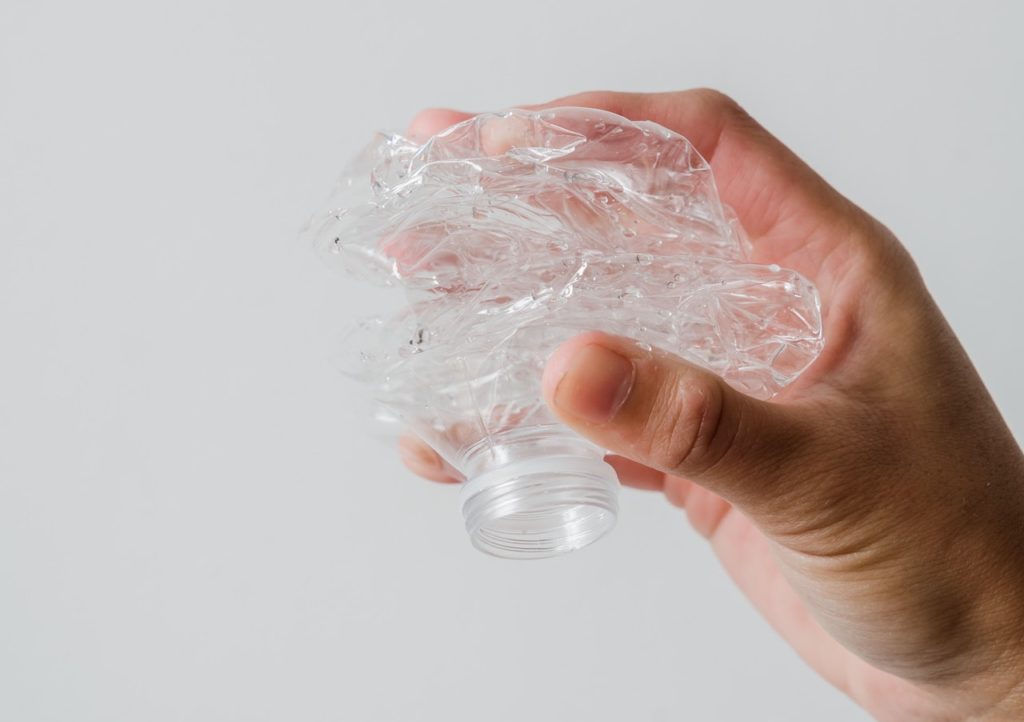
Drinking Water (Bottled Water)
If you’re a regular to absustainably then I’m willing to bet you don’t drink bottled water often. But, for those of you that do, even that’s not safe. This study tested almost 260 bottles from various sources and found that 93% had microplastics at an average of 10 pieces per liter (or roughly 32 ounces).
Effects of Microplastics
Effects of Microplastic on Humans
The effects of microplastics on humans isn’t fully understood yet. The consensus seems to be that they are not helpful or even neutral. Research generally indicates that plastic can be harmful to our bodies.
Take this quote from the Cyborg Baby article, “…they are known to cause endocrine (glands that make hormones) disruption that could have long-term effects on development and health. The authors state that they could have restrictions on normal foetal growth.”
Processes in our bodies can be thrown off really easily. Think about how daylight savings time throws your sleep schedule off, or how hormones in milk affects development in children. Hormones play an important role for key functions all over the body. The concern that chemicals in plastic can have a serious impact on our bodies isn’t unfounded.
The article on plastic in brain cells supports concerns about microplastics. That article found that microplastic could literally trigger cell suicide. There are a lot of questions to be answered on microplastics and humans, but it’s becoming more clear that they are not good.

Why are microplastics bad?
Microplastics are bad for all the reasons I mentioned above, but they’re also bad for other creatures and systems too. Sometimes science likes to understand humans more than other organisms on this planet, so it might take a little longer to understand how microplastics affect corals, different kinds of fish, crops, and other things. But what is important is that they don’t go away.
When you eat something, your body breaks it down. If you remember back to your school days, your teeth break down food first. They act as mechanical digestion. But your saliva and stomach acids act as chemical digestion. They’re breaking the food apart in a different way than our teeth. The environment breaks things down similarly, just on a larger scale.
Plastic can get mechanically broken down out in the wild. But it doesn’t really get chemically broken down. Not like a fallen log or a dead fish. There’s no creepy crawlies roaming the forest floor eating away at last night’s Coke bottle. So plastic just gets mechanically broken down but it still exists as plastic.
That’s really bad. Because even if we stopped polluting our planet with plastic today, all the plastic that is out there right now will continue to circulate in living systems until we intentionally take it out ourselves. But, there are some easy things you can do to avoid or help avoid future microplastics.
How to Avoid Microplastics
Avoiding microplastics can take on two meanings. One way is to avoid consuming them. The other way is to avoid producing them. I’m going to talk about both.
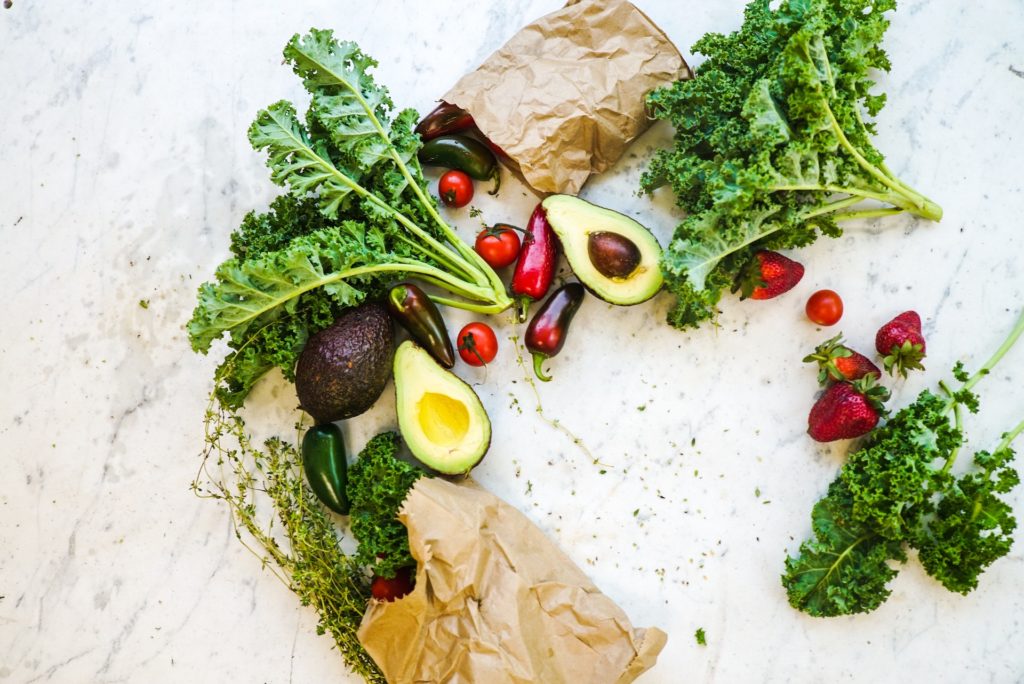
How to Avoid Consuming Microplastics
At this point, it is likely impossible to completely avoid consuming microplastics. Depending on what articles you read, you might see research that says (for example) only 80% of sampled fish were contaminated with plastic. But, there’s no way for you to know that you’re getting the plastic-free salmon at the grocery store. And no ocean or stream is immune to plastics pollution. So you might get lucky one day and have a plastic-free salmon filet, but the next day you might get a filet with microplastic.
If you’re thinking you’re safe because you’re vegan, think again. Even vegetables are taking in microplastics. This article from Phys.org discusses how microplastics are making their way into plants through roots and finding their way to the parts we eat.
So what can you do? You might not be able to entirely avoid microplastics, but you can make sure to minimize your exposure. To understand how, I need to tell you about biomagnification.
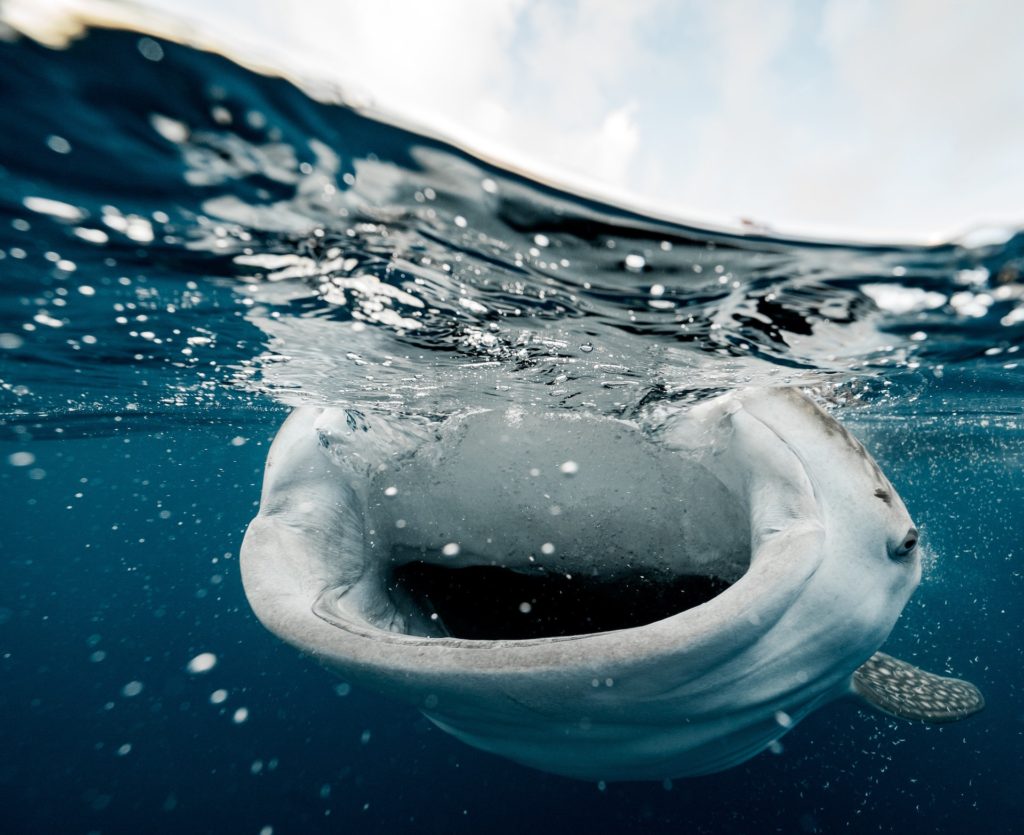
What is biomagnification?
Biomagnification is the concentration of a substance as you move up the food chain.
Think of biomagnification as nature’s own pyramid scheme. Except instead of the top being the richest in money, it’s the richest in microplastics. Let’s look at an example I’ve made up. Let’s say a plant is absorbing a few pieces of microplastic through its roots. Not too bad right? Well, now a little fish is swimming along grazing on that plant all day long. It eats a bunch of that one plant day after day. That small fish has more than just a few pieces, because it was eating a plant that had microplastics already in it.
Now a bigger fish comes and eats the smaller fish. It eats a lot of smaller fish actually. Now all the microplastics in those smaller fish are concentrated in that big fish. So the big fish now has the microplastics from the small fish it ate and the plants they ate.
Now a whale comes along and eats the bigger fish, and it eats hundreds of these fish every week. The whale now has the most microplastics in the food chain because everything below it on the food chain also consumed microplastics. That’s how biomagnification works.
You should NEVER be eating whales. I repeat, NEVER. But to follow this example, if you then eat a piece of whale, now you are at the top of the food chain with the most concentrated amounts of microplastics. You can avoid consuming as many microplastics if you stick to plants and animals at the bottom of the food chain. Since plants are generally the bottom layer of an ecosystem food pyramid, you’ll be safer sticking to fruits and vegetables.
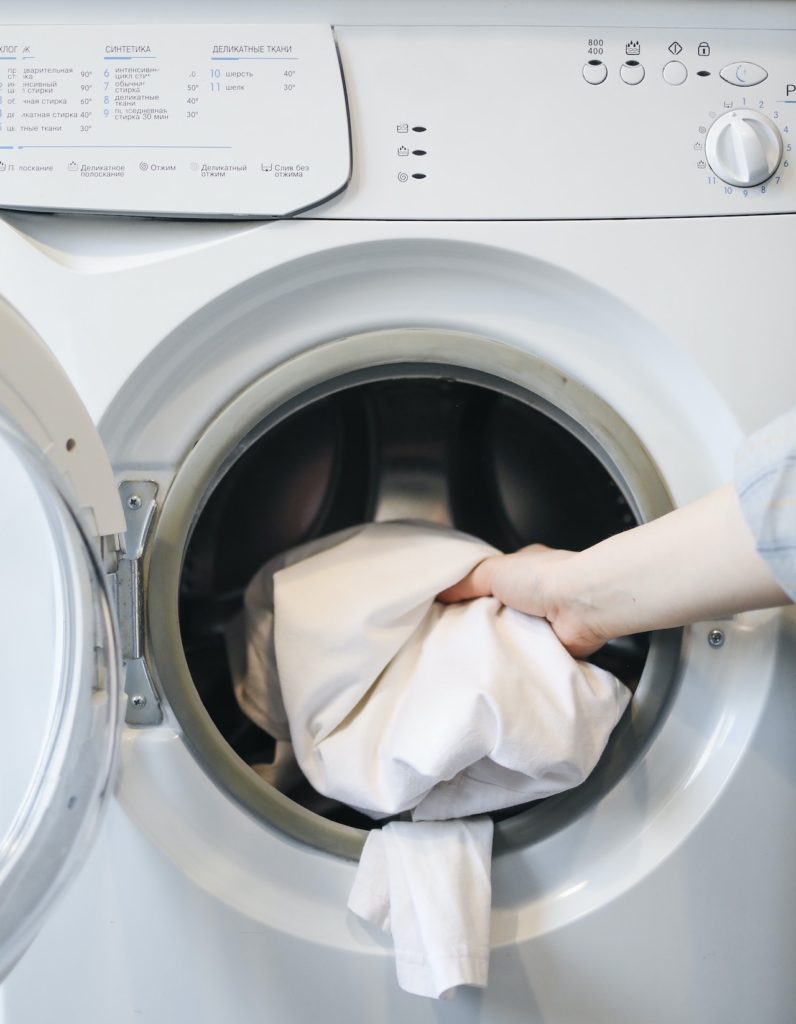
How to Avoid Producing Microplastics
There are several easy ways you can reduce microplastics in your life. Buying natural fiber clothing is an easy start. Materials like polyester, nylon, and acrylic are just forms of plastic. Each time you wash them, small fiber pieces break off and get washed away with the dirty water. Those fibers make their way into rivers and oceans, into plants and fish, and eventually back to your dinner plate or sip of water. Cotton, wool, and other natural fibers like bamboo don’t have that effect.
Another way to reduce the microplastics you produce is to buy a microfiber filter. You probably do have clothing made with artificial fibers, I know I do. It’s really hard to avoid them. A microfiber filter is an attachment you install on your washing machine. The water that is drained from your washing machine passes through the filter and the filter helps to catch any fibers so you can discard them. I know that’s not technically reducing how much microfibers you produce, but it’s reducing how much makes it into our water systems.
Microfiber filters are not a solution to the problem. The only real solution to avoiding microfiber shedding from your clothes is to stop buying plastic clothing and using plastic products. But until then, these are two easy ways to reduce and remove microplastics in your life.
Thanks for joining me today! If you liked this content and want to see more, please subscribe to my newsletter. You can do that here!
If you’re interested in some sustainable swaps, check out this page! It has every product/brand I’ve reviewed. You’ll find some great plastic alternatives there.
Sustainably is supported by readers like you. When you buy through links on this site, we may earn an affiliate commission at no additional cost to you. You can read more about affiliate links on our “Affiliate Marketing…” page.